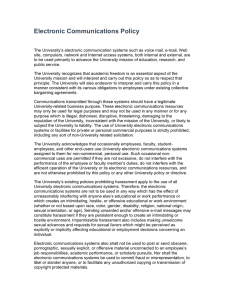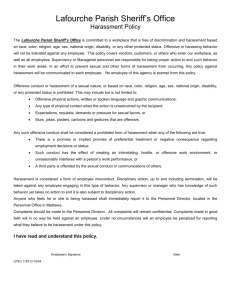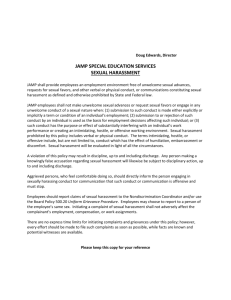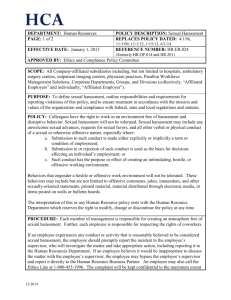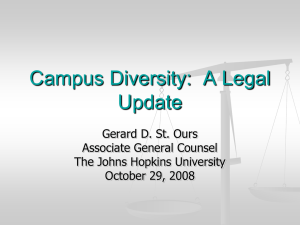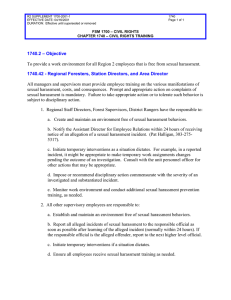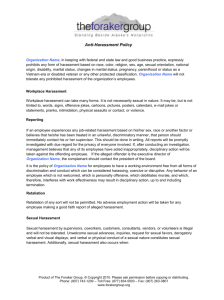Guide for Determining what Constitutes Harassment
advertisement
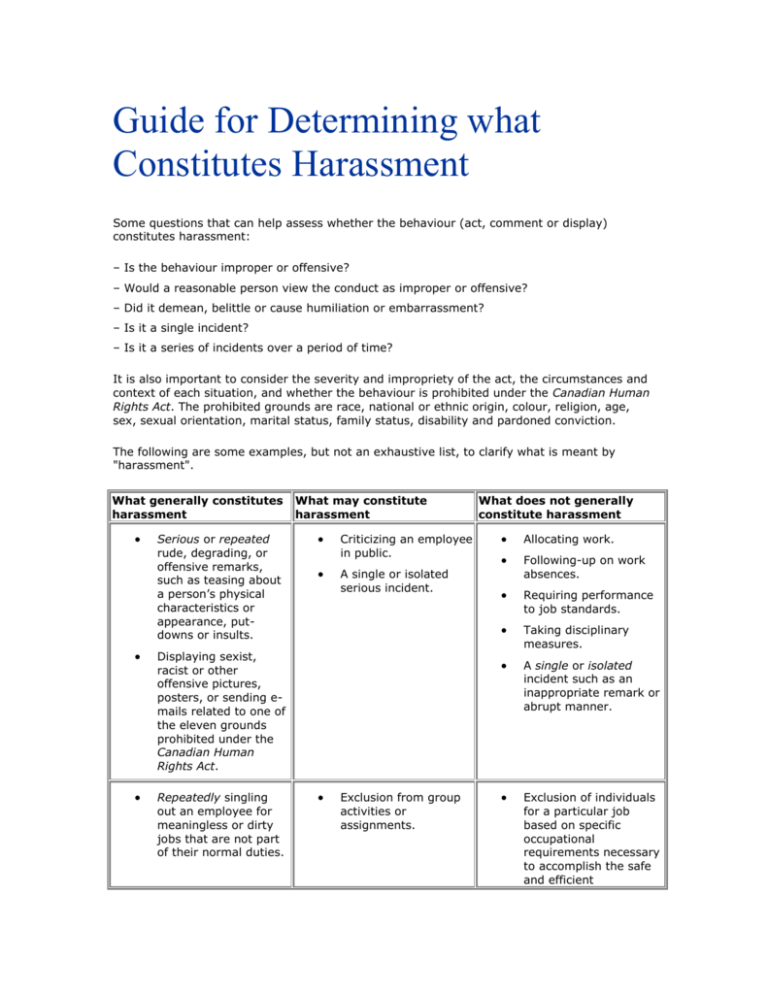
Guide for Determining what Constitutes Harassment Some questions that can help assess whether the behaviour (act, comment or display) constitutes harassment: – Is the behaviour improper or offensive? – Would a reasonable person view the conduct as improper or offensive? – Did it demean, belittle or cause humiliation or embarrassment? – Is it a single incident? – Is it a series of incidents over a period of time? It is also important to consider the severity and impropriety of the act, the circumstances and context of each situation, and whether the behaviour is prohibited under the Canadian Human Rights Act. The prohibited grounds are race, national or ethnic origin, colour, religion, age, sex, sexual orientation, marital status, family status, disability and pardoned conviction. The following are some examples, but not an exhaustive list, to clarify what is meant by "harassment". What generally constitutes harassment Serious or repeated rude, degrading, or offensive remarks, such as teasing about a person’s physical characteristics or appearance, putdowns or insults. Displaying sexist, racist or other offensive pictures, posters, or sending emails related to one of the eleven grounds prohibited under the Canadian Human Rights Act. Repeatedly singling out an employee for meaningless or dirty jobs that are not part of their normal duties. What may constitute harassment Criticizing an employee in public. A single or isolated serious incident. Exclusion from group activities or assignments. What does not generally constitute harassment Allocating work. Following-up on work absences. Requiring performance to job standards. Taking disciplinary measures. A single or isolated incident such as an inappropriate remark or abrupt manner. Exclusion of individuals for a particular job based on specific occupational requirements necessary to accomplish the safe and efficient performance of the job. Threats, intimidation or retaliation against an employee, including one who has expressed concerns about perceived unethical or illegal workplace behaviours. Statements damaging to a person’s reputation. Measures taken against someone who is careless in his or her work. Unwelcome social invitations, with sexual overtones or flirting, with a subordinate. Making sexually suggestive remarks. Physical contact such as touching or pinching. A social relationship – or flirtation welcomed by both individuals. Friendly gestures among co-workers. Sexual assault Unwelcome sexual advances. Sexual and physical assaults are covered by the Criminal Code.
